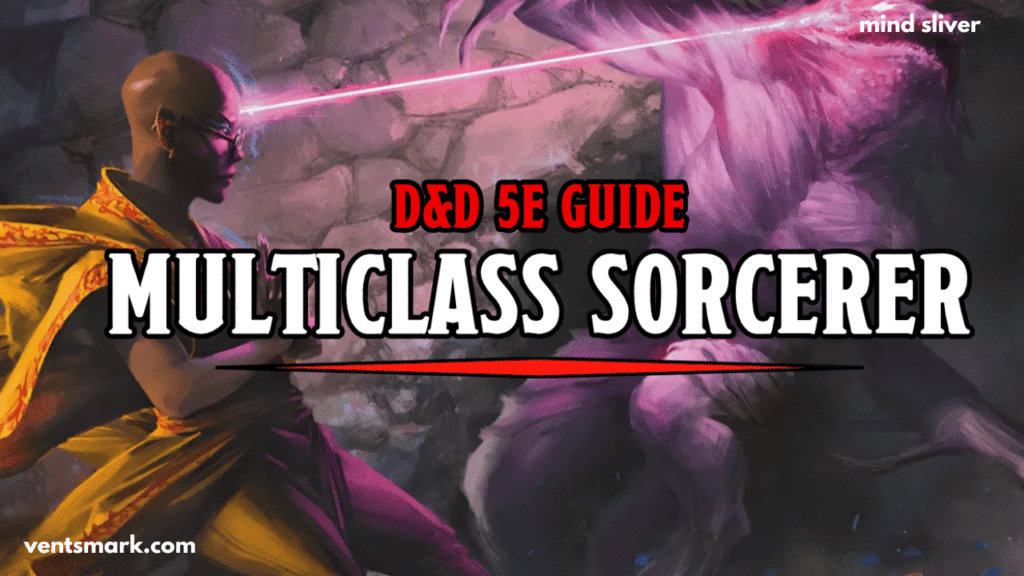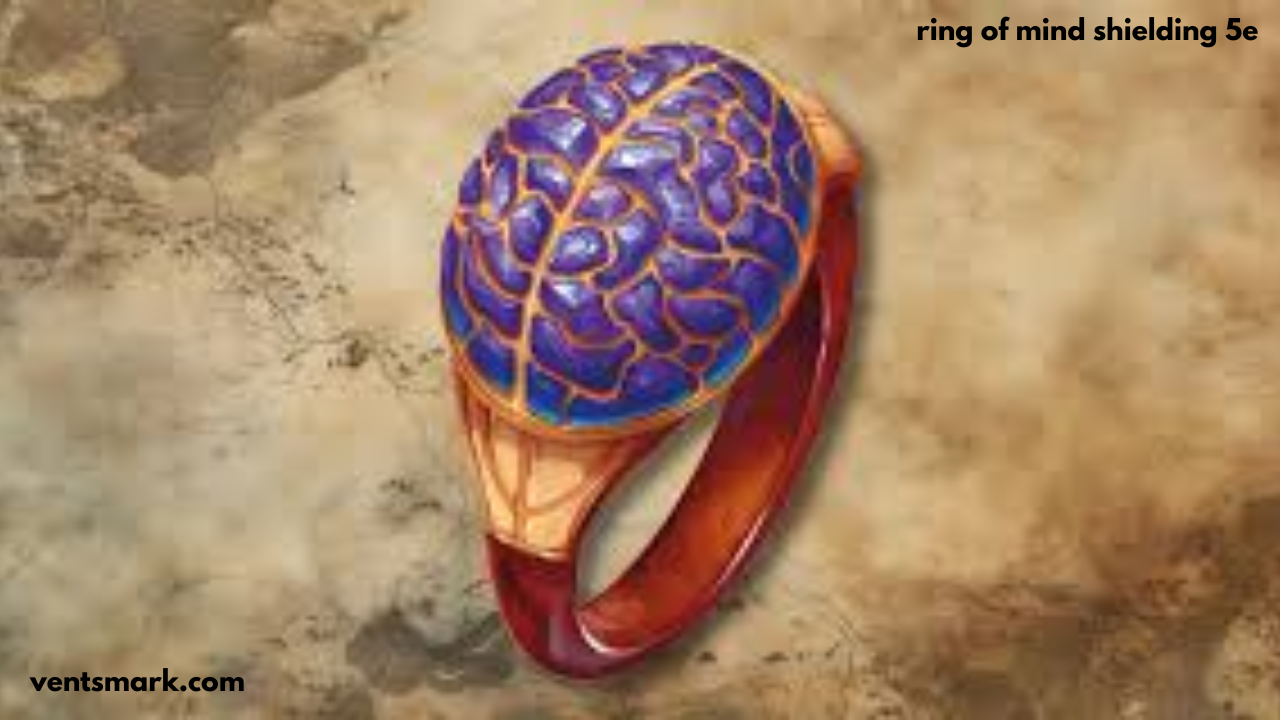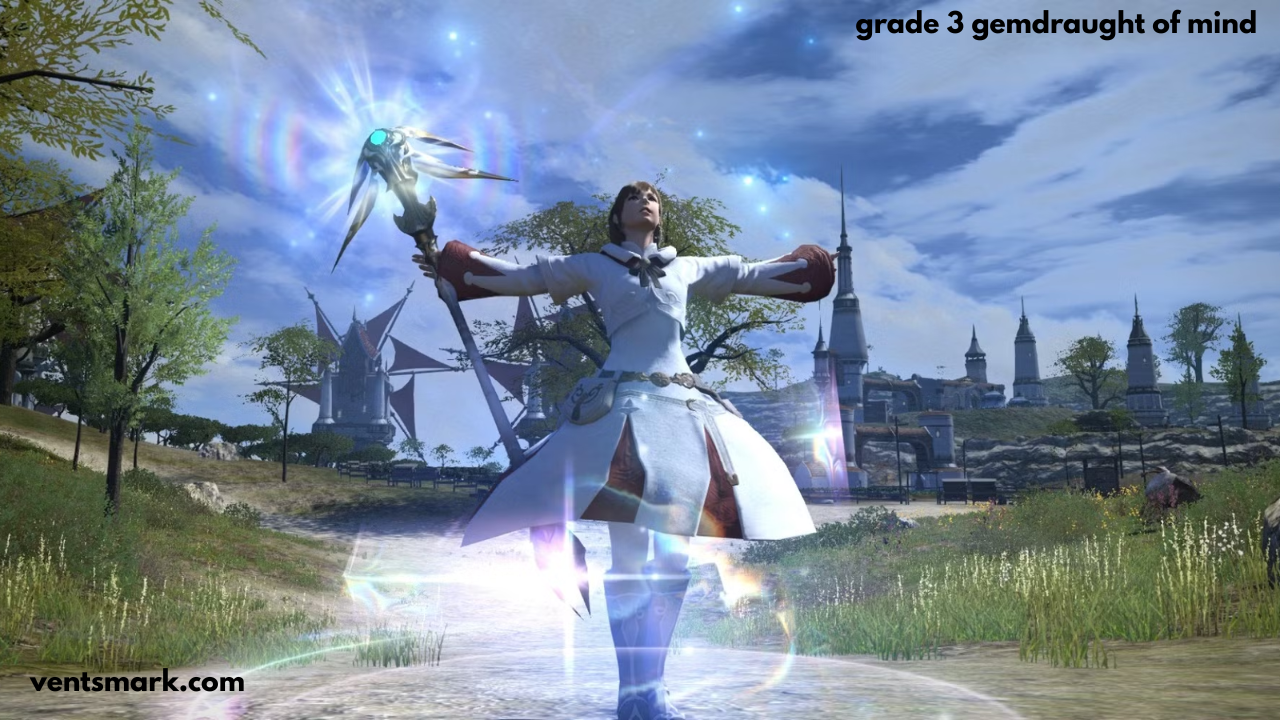Introduction: Why Mind Sliver Deserves Your Attention
Playing a spellcaster in Dungeons & Dragons 5e, you recognize the significance of having cantrips that offer more than mere damage. Mind Sliver is a spell that serves a dual purpose—damaging foes and providing beneficial effects. This article will detail all aspects of Mind Sliver, covering its functionality, tips for effective use, comparisons with other spells, and responses to frequently asked questions from players
Whether you’re a seasoned D&D veteran or a beginner looking to optimize your spellcasting, this guide will arm you with the knowledge to use Mind Sliver to its fullest potential.
What Is Mind Sliver?
Spell Basics
- Spell Level: Cantrip
- School: Enchantment
- Casting Time: 1 action
- Range: 60 feet
- Components: V
- Duration: Instantaneous
- Saving Throw: Intelligence
- Damage Type: Psychic
Description (Source: Tasha’s Cauldron of Everything)
You send a confusing burst of psychic energy into the mind of one creature you can see within range. The target must make an Intelligence saving throw. If it fails, it takes 1d6 psychic damage and its next saving throw is reduced by 1d4 before the end of your next turn.
This unique combination of psychic damage and saving throw debuff makes Mind Sliver a powerful tool in both offense and support roles.
Why Choose Mind Sliver?

1. Rare Damage Type
Psychic damage is one of the easiest types of damage to deal with in 5e. Most creatures are more likely to be hurt by psychic damage than by fire or cold, which makes this spell very good at working.
2. Save-Stacking Potential
The -1d4 penalty to the next saving throw can set up devastating combos with spells like:
- Hold Person
- Tasha’s Hideous Laughter
- Banishment
- Blindness/Deafness
These interactions can turn the tide of battle when used correctly.
3. Intelligence Save Targeting
Few monsters have high Intelligence saves, making Mind Sliver a high-success spell against a wide variety of enemies.
How Does Mind Sliver Work in Practice?
Using It Strategically
Mind Sliver is not just about damage—its true power lies in its synergistic potential. Here’s how to use it effectively:
- Lead with Mind Sliver before casting a high-stakes spell that requires a saving throw.
- Pair it with allies’ spells—lowering an enemy’s save gives other party members a better shot at landing effects like Web or Entangle.
- Target low-Intelligence creatures—this increases your odds of success significantly.
Mind Sliver in Multiclass and Class Builds

Best Classes to Use Mind Sliver
- Sorcerer: Excellent for quick cast + combo setups, especially with Metamagic options like Twinned Spell.
- Wizard: Pairs well with control spells in the Enchantment and Illusion schools.
- Warlock (via Pact of the Tome): Ideal for utility builds that mix eldritch power and crowd control.
Synergistic Feats and Features
- Telepathic Feat (TCoE): Fits flavor and function.
- Metamagic: Heightened Spell: Increases chances for the enemy to fail their save.
- Arcane Tradition: Enchantment (Wizard): Enhances debuff potential when using enchantment spells.
Advanced Tactics and Combos
Combo 1: Mind Sliver + Hold Person
Step 1: Cast Mind Sliver to apply -1d4 to next saving throw.
Step 2: On your next turn, cast Hold Person.
Result: Greatly increased chance the enemy fails and is paralyzed.
Combo 2: Mind Sliver + Bane (from an ally)
- Stack Bane (-1d4 to attack/save) with Mind Sliver for a -2d4 penalty.
- This drastically reduces a boss’s saving throw chance.
Combo 3: Mind Sliver + Counterspell Trap
- Force a caster to make a saving throw with a penalty just before a high-stakes Counterspell opportunity.
Comparisons With Other Cantrips
| Cantrip | Damage Type | Save/Attack | Utility/Debuff | Best Use Case |
|---|---|---|---|---|
| Fire Bolt | Fire | Ranged Attack | No | Raw damage |
| Eldritch Blast | Force | Ranged Attack | Push (Eld Inv.) | Warlocks |
| Vicious Mockery | Psychic | Wisdom Save | Disadv. on next attack | Support bards |
| Mind Sliver | Psychic | Int Save | -1d4 save | Combo setup |
Verdict
While Fire Bolt and Eldritch Blast deal more damage, Mind Sliver adds strategic depth, especially for control-based spellcasters.
Common Misconceptions and Clarifications

1. Does the save penalty apply immediately?
No—it applies to the next saving throw before the end of your next turn.
2. Does the penalty stack with itself?
No—you can’t stack Mind Sliver’s -1d4 with itself. However, it stacks with Bane or other debuffs.
3. Can it be twinned?
Yes, with Twinned Spell (Sorcerer), Mind Sliver can hit two targets, doubling the value in crowd control scenarios.
Case Study: Mind Sliver in Boss Fights
Scenario: The Party Faces a Mind Flayer
- Round 1: Wizard casts Mind Sliver, Mind Flayer fails, -1d4 on next save.
- Round 2: Cleric casts Banishment. Mind Flayer rolls at disadvantage and fails due to the debuff.
- Outcome: Boss removed temporarily, party gains control of battlefield.
This demonstrates the tactical edge that Mind Sliver provides when used as part of a coordinated spell plan.
Pros and Cons of Mind Sliver
Pros
- Targets an uncommon save
- Effective against low-Intelligence creatures
- Enables powerful spell combos
- Deals psychic damage
- Available at level 1 (TCoE)
Cons
- No effect if enemy succeeds on save
- Single target only
- Less raw damage than Fire Bolt or Toll the Dead
Frequently Asked Questions (FAQs)
Is Mind Sliver worth taking as a primary cantrip?
Yes—especially if your build relies on spell saving throws or battlefield control.
What level does Mind Sliver scale?
Like other cantrips, it scales with character level:
- 5th Level: 2d6 damage
- 11th Level: 3d6 damage
- 17th Level: 4d6 damage
Can non-Intelligence-based enemies resist it easily?
Most monsters in 5e have low Intelligence, making Mind Sliver a high-hit-rate option.
Conclusion: Is Mind Sliver Right for You?
If you’re a spellcaster who likes to take control of battles, Mind Sliver is a really useful spell to have. It might not be as strong as some other damaging cantrips, but it’s special because of how it can be used with other spells. That makes it a great choice in D&D 5e. Want to learn more about other cantrips and tactics? 👉 Subscribe for more D&D tips or leave a comment with your favorite Mind Sliver combo!
Call to Action (CTA)
Did this guide help you enjoy your game more? 💬 Let us know your thoughts or ask any questions in the comments. 📢 Don’t forget to share this with your D&D group so they can learn how to use Mind Sliver too!






Leave a Reply